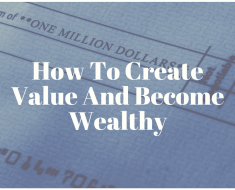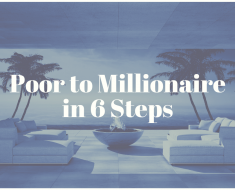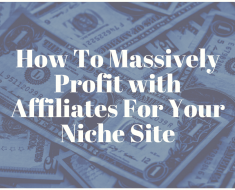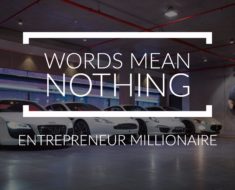In the Internet Age, there are so many different ways to make good money, aka High Six Figures per year +, that you no longer have any excuses. The following article from Forbes, highlights a young millennial entrepreneur who is making over $500K per year selling Bikinis.
Even though he runs a One-Man ship, he outsources a ton of the work. You no longer have to do everything yourself, you can have virtual assistants around the country working for you.
Enjoy the following article.
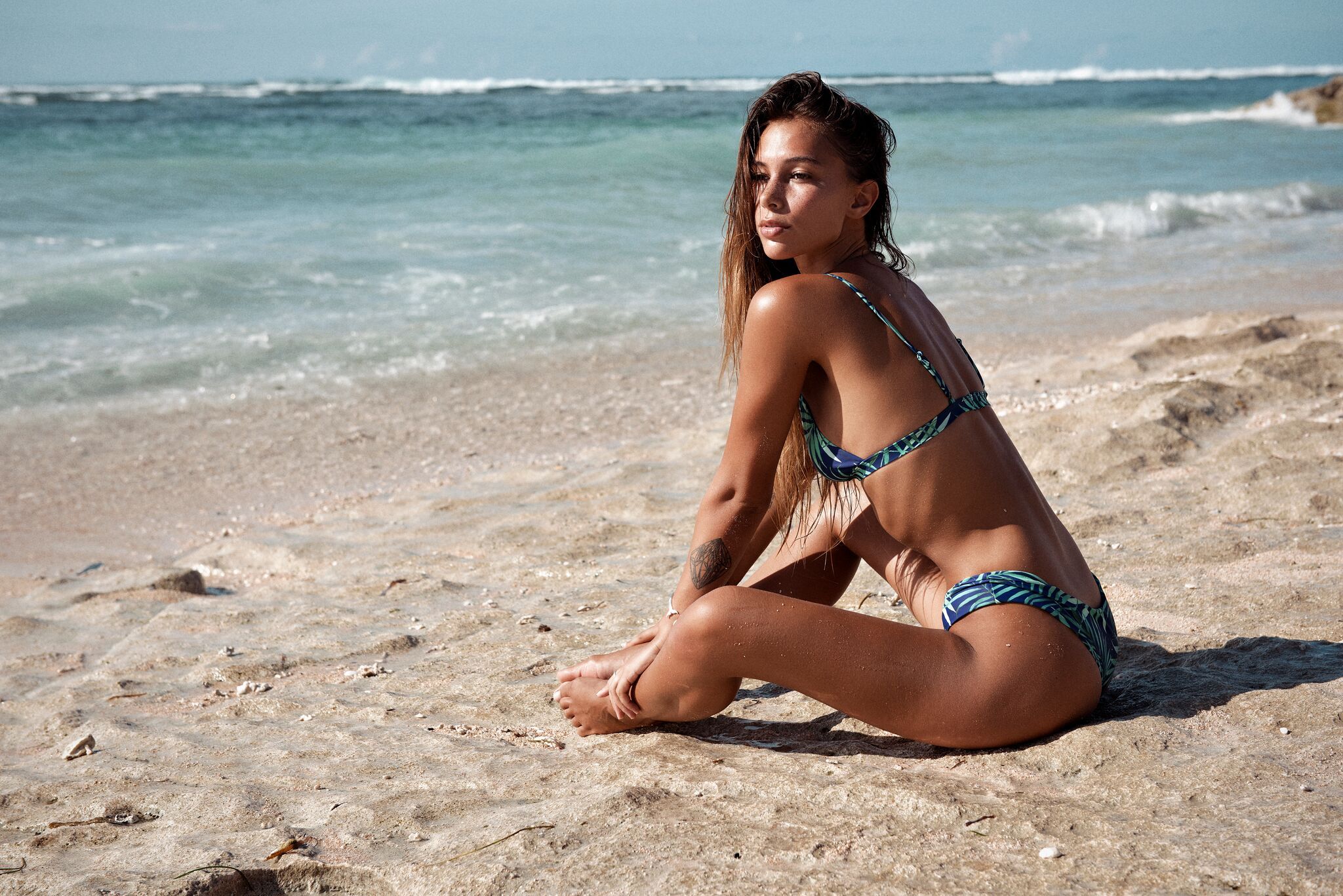
Responding to his sister’s frustrations with typical bikinis, John Moran, 25, designed his own for women who like to be both active and stylish.
Here’s how he pulled it off:
Use whatever resources you have at hand. Moran started out selling phone cases featuring his photographs to beachgoers in Cape Cod in 2014, then moved onto selling nautical beach jewelry on a website he put up in 2015 and 2016. His uncle runs a small manufacturing shop that make and sells sterling silver jewelry so he was familiar enough with the industry to feel confident coming up with his own designs. “I’d sketch them out and give them to my uncle, who manufactured the jewelry,” he says.
Although his family’s background in that field gave him an edge, Moran was self-funded and needed to stretch his very limited cash for the business to take off. Ordering very small batches of jewelry—as few as 20 to 30 pieces of each item—at a time, he was able to start generating cash flow by selling his designs through his site. He brought in $30,000 from his jewelry the first year, then $45,000 the second year, using ads on social media such as Instagram to spread the word.
Practice active listening. When Moran polled customers about what they would like him to offer next, they voted for bikinis. There was one problem: He did not know how to design them.
He taught himself by ordering 14 or 15 samples of bikinis from suppliers on Alibaba, a giant marketplace for manufacturers, and asking women from his school to try them on to see what styles worked for them—and didn’t work.
“I wanted to make really comfortable, soft bikinis,” he says. His sister had tried to find one but not found one she really loved.
After he went through 15 suppliers, he finally found one the offered the fit and quality he and his testers deduced was up to snuff. “With Alibaba, you’re looking for a needle in a haystack,” he says. Once he found the right supplier to make the bikinis, he stuck with that firm, which made the bikinis from his sketches.
Moran hired a company in Hawaii to design the actual prints. To make sure he chose patterns that would actually sell, he posted four or five prints on his Instagram feed at a time and asked customers to vote on their favorites using the polling capabilities in the My Story feature. “It’s helped us with choosing the right products our customers want,” he says. “It gives me more confidence and eliminates risk from my end.” It’s also been a great way to connect with customers, he says.
John Moran took the risk out of selecting prints by asking Vaya Island’s Instagram followers to vote on them.
When Moran’s initial batch of bikinis sold out in 2017, he put all of his jewelry on sale. “The bikinis took over the site,” he says.
It was not easy to let go of his original vision. “That was a tough transition for me,” he says. “It had been very attached to the jewelry and copyrighted a lot of the designs.”
Nonetheless, he saw where market demand really was and realized it made business sense to give his customers what they truly wanted. That helped his business take off. In 2017, he brought in $110,000.
Shine a spotlight on customers. Adopting the company motto “Live easy and live positive,” Moran started featuring, photos that his customers submitted of themselves wearing his designs. As he posted them, more women submitted photos. “It’s had a snowball effect,” he says. Meanwhile, Moran hired a photographer in Bali and other locations to shoot models wearing the bikinis and wove them into the feed.
His goal was to grow a lifestyle brand, rather than to simply pay for clicks. Gradually, he rolled out an “ambassador” program, where avid fans get a first look at new prints and get a 30% discount when they make purchases. “It’s an exclusive club to be introduced to new styles,” he says. “People really like the discount. They like sharing it. They like posting that they’re a Vaya Island ambassador.”
To spread the word even more, he create a hashtag #goliveeasy. That helped attract other, like-minded customers. “We’ve created a community on Instagram,” he says.
Make the most of influencer marketing. Noticing the growing number of fashion influencers on Instagram focusing on bikinis, Moran reached out to some of the up-and-coming personalities and offered to send them a free swimsuit in exchange for a post. With better-known influencers with a following from 200,000-to-1 million people more, he paid them for posts. “A lot of them do charge,” he says. “That’s how they make their living.
He chose them cautiously, to avoid wasting his limited funds. Some of the priciest placements he considered ranged from $1,000 to $9,000 a post, depending on the influencer, he says. He set a limit of $500 a post for his own paid advertising. “You have to be careful in a lot of different ways,” he says.
Sometimes, the bikinis might not resonate with someone’s following, for instance. “Someone with 1 million followers might not get as much engagement as someone with 400,000 followers,” he says.
But Moran hasn’t relied only on influencer marketing. He has found that Facebook and Instagram ads are more trackable, if he offers a coupon code, and often are a better investment. “If I spend $1,000 on an ad set, I can see how much I made by the end of the week,” he says. “I can see an upward tilt in traffic on my website.”
Don’t do it all alone.To extend what he can get done in his one-man business, Moran uses a fulfillment center, recommended by a fellow entrepreneur, which stores his products and ships them from its warehouse. He found that once he got to 80 to 100 orders a day, outsourcing made it easier to keep up. “It’s freed me up to focus on driving more sales and negotiating deals with influencers,” he says.
Moran considered hiring a team of employees to fill orders but, with his business in growth mode, felt it was best to keep his overhead lean at this point. He gets the same benefit from outsourcing. “It’s like having a staff of people,” he says.
Stay focused. Although Moran’s business has done better than he anticipated, he faces the same highs and lows as any other entrepreneur. In a one-person business, he says, “We really control our own fate in a lot of respects.”
That reality, while freeing, can bring some pressure with it. When something goes wrong, he says, “I don’t really dwell on it. I try to move forward and use it as a motivation to work hard.”
When he hits a real roadblock, he says, “I put the work down. I say, ‘Now may not be the right time.’” Then he goes to the gym or for a run to recharge.
“I try to clear my head and go back to it,” he says. “More often than not, it works out.”
That mindset has served him, well, swimmingly, so far, as he’s continued to build the business.
Source: This Millennial Entrepreneur Built A $500,000, One-Man Business By Re-Thinking The Bikini
Connect with us on social media:
Instagram: https://www.instagram.com/entmillionaire/
Facebook: https://www.facebook.com/entrepreneurmillionaire/
Twitter: https://www.twitter.com/entmillionaire/
YouTube: https://www.youtube.com/channel/UC40e73REmsMAQdZfcqcl0mw
If you would like to improve the sales of your company, check out our sister company!
Empower yourself and become a Success Story, check out our products here.

